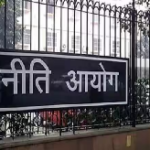1983 World Cup members of the Indian Cricket Team had a daily allowance of ₹600 for three days, which is equivalent to ₹200 per day, coupled with a match fee of ₹1500 per game. Today, this comes down to a very small sum; only now perhaps one realizes the gigantic difference in earnings between then and now. Cut to 2024, reserve players like Rinku Singh and Avesh Khan join the fray for ₹1 crore without stepping onto the field.
These allowances and match fees were basically the money that most players earned in the 1980s; this contrasts greatly with what it is now, fat contracts and several endorsements. For instance, the ₹600 per day was hardly enough to get them through their short stints while representing the country, and the ₹1500 one got as a match fee partly depended on one’s performance on the field.
The BCCI took a lead role in such change, from nominal allowances stepping up to offer multi-crore contracts today. Commercialization raised the rewards of playing enormously, both through on-field performance-linked earnings as well as off-field endorsements. Probably the most underlined change here extends to note the enhanced global stature and economic impact that the game enjoys today, which fuelling financial rewards to players has grown manifold.
As the game continues to enthrall audiences around the world, the financial environment of cricketers is bound to grow further. This journey from token allowances to multimillion-rupees contracts narrates the commercial transformation of cricket against a broader global sporting environment.
With sustained interest in cricket and the opening up of new commercial opportunities, today’s cricketers have another battlefield to fight in terms of securing high price contracts and endorsements other than on-field engagements. Starting from whatever small daily allowances earlier and match fees to a million-dollar contract, the journey of cricket as a professional sport probably won’t stand comparable on any terms with any sport.



